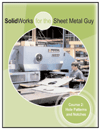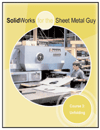You can keep your feet grounded and instead visit places such as the Frederik Meijer Gardens and Sculpture Park in Grand Rapids, Mich., or the University of Wyoming’s Laramie, Wyo., campus.
Although he has never fabricated an elbow or banged out a fitting, the 62-year-old Scottsdale, Ariz., resident is very much a sheet metal worker — one whose work graces the public spaces and private offices of companies across the country.
Kinkel is a sculptor, one whose preferred medium is bronze, the sometimes shiny metal whose industrial uses include machine bearings and weatherstripping. Although the Bronze Age is long past, Kinkel still celebrates its craftsmanship with his many creations. He especially enjoys creating images of hard-working people: firefighters, welders and sheet metal workers.
“The biggest thing is to find that part, that slice of life, that you sort of freeze in bronze and speaks to a wide spectrum of viewers,” he says. “I try to depict people in the jobs they love so much.”
Bridging the ‘Generations’
And perhaps his best-known example of such a “snapshot” is “Generations,” the 11-foot bronze piece he created for the Sheet Metal Workers union in 1985. It captures two older sheet metal workers handing off their tools — and knowledge — to a younger apprentice. For many years, it stood at the union’s former pension fund building in the Washington, D.C., suburb of Alexandria, Va.
“It’s really become kind of an icon,” he says. “They (the union) use it for an image on their credit cards, all their promotional stuff. Everybody seems to like it.”
For the inspiration to create that piece, Kinkel didn’t have to look far. Coming from a family full of sheet metal workers, he modeled two of the men depicted on his father and grandfather. Seeing the hard work the men put into their jobs inspired Kinkel.
“I just wanted to get ‘sheet metal guys.’ I wanted to get how they stand, because they stand different sometimes,” Kinkel says. “They spend a lot of time on their knees.”
Longtime sheet metal workers may recognize the figures’ slightly hunched-over gaits, the product of years of backbreaking work in tight places.
As a child, Kinkel points out that he spent many Saturdays in his father’s Arizona sheet metal shop, “playing with spot welders, shears and brakes.”
“I’m lucky I didn’t chop a hand off,” he says, laughing. But that lifelong industry interest paid off when the adult Kinkel, now a full-time artist, was asked by a gallery patron at an exhibit if he had ever considered doing a piece representing the sheet metal industry.
New skill sets
Eventually, he was hired to do “Generations.” The project required him to study some of the time-tested skills of the “incredibly creative” people he was depicting.
“In the course of it, I learned a lot of things that a lot of tinners don’t even do any more — layout and stuff like that,” he says. “It was a learning experience as well as an art experience.”
Making a large sculpture such as the 11-foot-tall “Generations” took months. To create a piece, models are first created in clay and molded. A wax version is made from the mold, which is eventually cast in bronze. The cast pieces must be reassembled and the welds used to hold them together made invisible. Putting it all in place can take more than a year.
Through his website, www.ajkinkelsculptor.com, Kinkel sells smaller tabletop versions of “Generations” and many of his other pieces. Prices for the largest works can top $100,000.
But making a living off such work isn’t always easy. Similar to much of the construction industry, many artists have suffered in the current recession. But Kinkel says he won’t do anything else — good news to fans of his sheet metal artwork.
“When art is good, there is nothing better. When it’s not, it can be pretty awful,” he says. “But I’ve always done it. It’s the kind of thing you can’t retire from.”
For reprints of this article, contact Jill DeVries at (248) 244-1726 or email devriesj@bnpmedia.com.














